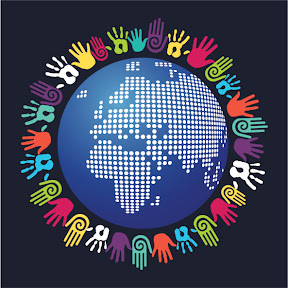Diversity as a Learning Imperative
- 8/2/13
Innovation is more likely when organizations use diverse perspectives to find solutions to common problems.

It is widely accepted that diversity is valuable to an organization, but it is worth examining why this is the case, especially when it comes to learning.
To begin, let’s explore why diversity, and more subtly inclusion, have become rallying cries for corporate leaders. If it is so good for us, why do we have to go to such great lengths to deploy policies and procedures to accomplish what appears to be a self-evident moral priority? History holds an answer.
Before we became civilized, our ancestors were largely ignorant about the bigger world and what was going on in far-off lands. The range of those we descended from was approximately the distance one could walk in a day or later cover on horseback. Related to our limited mobility was the threat of the unknown. There were lots of things in our ancestors’ world that could and would hurt them. Strangers would attack their villages and steal their food.
In the face of these risks, it was a survival strategy to only trust people with the same heritage. Opening one’s self to those who were different was dangerous. Fight or flight instincts triggered by difference operated at the most primitive levels of human brains.
In response to the threats of the unknown, our ancestors formed tribes. Tribes were made up of those who looked like each other and had known pedigree. Visible clues served as survival safety mechanisms for hundreds of generations.
Today organizations are our tribes. Like the primitive tribes of old, our modern tribes have missions, visions and values. Our ancestors simply passed theirs on in an oral tradition worthy of tightly knit communities. The next generation learned from those most like themselves — their elders. Things were stable and predictable. Ignorance was bliss. Sameness represented safety.
Modern technology changed this. In ancient tribes there was an advantage to allowing the wise men of the village to maintain tribal knowledge. Today we write out the vision, mission and values and publish them on our tribal websites for all to see. The conflict comes when some attempt to preserve the heritage of the wise man.
In today’s linked global world made up of hundreds of millions of others unlike ourselves and our ancestors, the value of ideas trumps the value of beads and gourds. The more ideas the better. The value of diversity in the modern tribe — an organization — is evident. Innovation is more likely when the tribe uses diverse perspectives to find solutions to common problems. Diversity acts to accelerate the creation of new knowledge.
Today everyone has global reach spanned by the short distance between fingers and a keyboard connected to the Internet. The walk and the horse our ancestors required is now obsolete. The wisdom of the crowd working through the Web has replaced the wise men of the tribe. Fully embracing the global community has flipped from being dangerous to being an advantage.
The learning implications for diversity and inclusion are a bit different from the widely held moral imperative to embrace those who are different. When it comes to learning and innovation, we actually want to preserve diversity as an important ingredient to stimulate the emergence of innovative ideas in the modern tribe. Once we have embraced those who are different, we are well-served to sustain such diversity into the future.
Thus, in contrast to the ancient survival imperative to homogenize the tribe, it is a distinct advantage to make composition of our modern tribes as diverse as possible. Including those who are diverse under a common mission, vision and values empowers the organization in a hyper-connected world. How strange would our tribal ancestors have found this shift in survival strategy?
Moby Dick has something to say about Innovation, too!
ReplyDeleteJust as important as the monomaniacal Captain Ahab narrative, and his disastrous hunt for the Whale that took his leg - is the parallel story about how Ishmael is recovered in the end because of his love of Queequeg. The strange "other," whose coffin with all of the "symbols and secrets of the Universe" carved onto it, bobs out of the wreck for Ishmael to rest on until he is picked up. And in the beginning, he only decided to understand the man and his weird symbols and rituals because of his own limited interpretation of the Golden Rule - if he wanted Queequeg to become a Christian, well then he should learn his ways too. But it grew deeper, just like shallow public relations attempts at diversity in the 20th Century can also become something different for the future.
And reminds me of our conversations in the first six months of the Governance Committee - Why STEM, What is the What? Well the 20th Century Economy is a shipwreck, so STEM, STEAM, STREAM, INNOVATION, CREATIVITY - something, anything - please help!